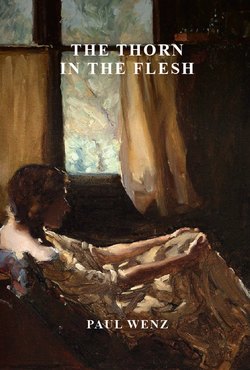Читать книгу The Thorn in the Flesh - Paul Wenz - Страница 6
INTRODUCTION By Helen Garner
ОглавлениеPaul Wenz was a Frenchman who loved Australia from the moment he set foot on this continent in 1892, and who set out to learn the country from the ground up – as a jackeroo and grazier. His wide practical experience of working bush life informs (as it does all his writings) the novel The Thorn in the Flesh, an old-fashioned, pacy melodrama, set perhaps 80 years ago, which first appeared in French in 1931.
Its theme is simple: a tale of Miss Susie Brady, a woman with ideas above her station, who is spurned, and whose jealousy corrodes her life and drives her to try to sabotage the happiness of John Iredale, the prosperous South Australian grazier who has broken her heart.
No writer now, at the end of the 20th century, would think to emulate The Thorn in the Flesh with its unsophisticated psychology, its classic sketches of bush types, and its women characters neatly categorised as either good or bad. But apply to it the useful rule of thumb which judges a work of art according to whether it bestows energy on us or deprives us of it, and Wenz’s novel passes the test with flying colours.
One may smile a little, perhaps, from the bruised and bossy eminence of the 1990s, at Wenz’s unadventurous structure; his plain, steady narrative, manly and good-humoured, innocent of fancy devices, interiority, or agonised self-consciousness; his awkwardly bright dialogue; his elementary approach to human (especially female) motivation.
One sits up and begins to take notice, however, when he tosses off authoritative observations drawn from a life spent far from cities. Iredale, the station owner, is described as “a good bloke, quite young, not married and afraid of women.” In a grazier’s house “the bedrooms were too small, as if these men could not forget the tent under which they had lived for so long”. “One of the first toys of the Australian child is a tomahawk.” “The dog died,” the story goes, “and the man went mad.”
One pays attention when he executes the odd relaxed flourish of eloquence. On the warm evening when the unfortunate Susie arouses Iredale’s dormant sexuality, “the silhouette of the orange trees closing off one whole side of the garden was like a sacred wood, a mass of mystery and dense shadow. You could make out the almost phosphorescent spots of their countless flowers; at their feet, the ground was white with their petals.”
And before long, one turns green with envy of Wenz’s ear and his eye. Wenz is a brilliant noticer – a talent one is born with, it seems, and without which no novelist can draw us into the world he is making. Off every page of this novel, in Maurice Blackman’s graceful and self-effacing translation, leaps a sharp fizz of life, sparked by a writer alert in every nerve to the physical world and its poetry.
A policeman’s face in fierce sunlight reflects the “crude green of his helmet’s lining”. Afghan camel drivers in “loose, balloon-like trousers” are wearing “heavy European shoes”. Shorn rams look like “badly peeled potatoes”. Calves locked up for the night “look through the railings at their mothers grazing on the outskirts of the yard”. A woman thrown from her horse far from home, seriously injured, and waiting for rescue as night falls, sees “the stars budding on the branches”. An Australian gambling rashly in Monte Carlo sees the “enormous, barbaric jewels” worn by the women who frequent the casino. A sugar cupid on a wedding cake hovers “trembling on a spiral spring which went into (its) belly”. Patent leather shoes have “the shine and suppleness of enamelled porcelain”. And (my favourite) a dog’s footsteps, approaching along a verandah, sound to a sick person in one of the rooms “like seeds dropping on to a wooden surface.”
Classy stuff, this – the fruit of delighted observation, of a sensuous and irrepressible joie de vivre. You cannot fake this quality, it is remarkable; and long after one has forgotten the cardboard goodness of Iredale’s chosen bride, the symbolism of the giant ring-barked eucalypt, and the last-minute change of heart of Miss Susie Brady (this Becky Sharp minus Thackeray’s hilarious psychological acuity), there lingers in one’s mind the rare and special pleasure of the sense-texture which Wenz has created – a poignant gift from a Frenchman to Australia, his adopted country.
Sydney, 1998
